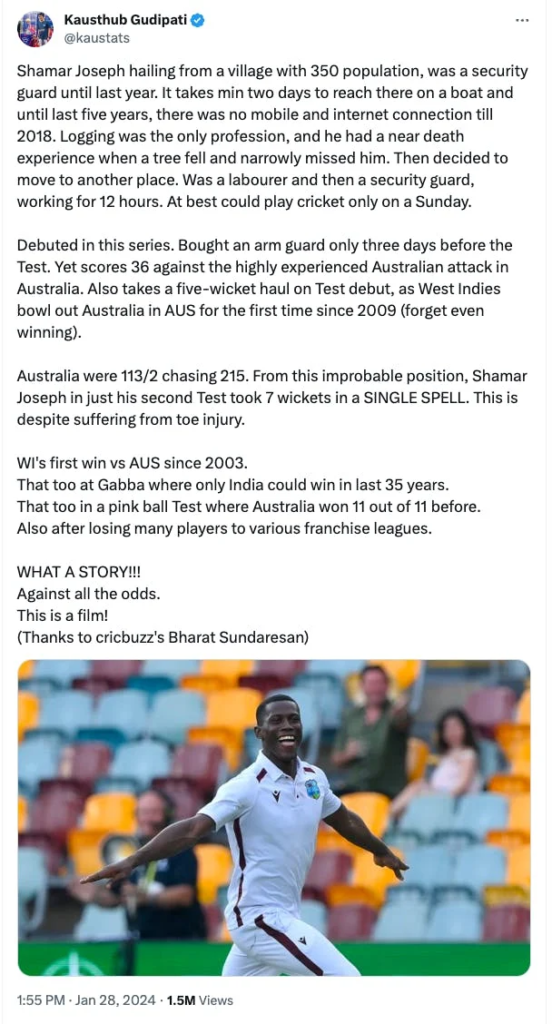Regulating emotions through reframing
Welcome to the forty-ninth edition of ‘3-2-1 by Story Rules‘.
A newsletter recommending good examples of storytelling across:
- 3 tweets
- 2 articles, and
- 1 long-form content piece
Let’s dive in.
🐦 3 Tweets of the week

Ouch, that hurts. Of course, the price here is time, attention, and effort.

Such a great summary of Shamar’s inspiring story.

Again, ouch.
📄 2 Articles of the week
a. ‘Make Classics, Not Content’ by Lawrence Yeo
Lawrence makes a compelling case for creators to avoid the trap of creating mundane content to a schedule.
(I’m, ahem, assuming that curated-content weekly newsletters are exempt from his purview).
Lawrence says that when it comes to great art, frequency does not matter:
…when it comes to my favorite creatives, frequency doesn’t mean much. I don’t admire Van Gogh because he had a new painting to show every Monday. I don’t think Dostoyevsky is a brilliant novelist because he published a book every 6 months. I don’t like Tarantino because he promises a new film every year.
In his view, art comes from inside, while content is externally driven:
Content is the commodification of creativity. It’s the piecemealing and packaging of art so that it can be delivered at regular intervals to satisfy the needs of the attention economy. In an era where media is forever abundant, content is what people create to show and remind others that they exist.
In my view, art and content are not synonymous. The purpose of art is to express oneself deeply, while the purpose of content is to garner attention quickly. Art follows a pace that is set internally, while content adheres to expectations that are set externally.
His solution: balance the need to be consistent with need to be great:
The right idea is an optimal balance between regular ‘content’ and long-form ‘art’:
You put in the reps by regularly publishing, then once there’s a topic that you want to dive deep into, you invest the time and energy necessary to create something long-lasting.
b. American imagination needs an adrenaline shot. Here’s how I’ll deliver it.
Dan Pink is one of my favourite writers – his books (To Sell is Human, Drive, When) have deeply impacted me.
For his latest project, he has started an interesting initiative – asking folks to submit innovative and even outlandish ideas for improving the world. He would be writing about these ideas in the Washington Post, after due research:
Over the next year, in a column for Post Opinions we’re calling “Why Not?,” I will try to do just that. In each installment, I’ll offer a single idea — bold, surprising, maybe a bit jarring — for improving our country, our organizations or our lives.
…
This will not be a softhearted exercise. For each idea, I’ll run the numbers and analyze cost and feasibility. I’ll interview scholars, public officials and front-line workers to surface counterarguments and anticipate pitfalls. Sometimes, I’ll visit people and places where versions of an idea might have been tried, to learn from their experiences.
I like the call to action for curiosity instead of certainty and scepticism:
Curiosity over certainty. If you’re seeking uncompromising positions or definitive doctrines, look elsewhere. Here at Why Not? we approach our job differently from the screamers on cable news or even some other columnists. In this corner, you’ll hear a lot more “I wonder …” than “I’m sure …” The world is uncertain. Curiosity and intellectual humility are the most effective solvents for unsticking society’s gears.
🎧 1 long-form listen of the week
Lisa, a psychologist and neuroscientist, is one of the foremost experts on the topic of how emotions are made and how we can manage them.
In this conversation, Adam and Lisa talk about how to regulate your emotional reactions by being more aware of them and through the powerful technique of recategorisation.
I loved “Get your butterflies flying in formation.” – a line I’ll be using in my sessions!
Lisa: When my daughter was 12 years old, she’s a tiny thing. She was barely five feet tall and she was testing for her black belt in karate with these hulking adolescent boys who were like at least a foot taller than her, and she was gonna have to spar with them. And her sensei, who is a 10th degree black belt. So this guy could break a board by looking at it, you know, saunters up to my daughter and says to her, not “Don’t be scared”, not, you know, no, no placating like you can do a little girl. He just looks at her, he goes, “Get your butterflies flying in formation.” And I thought, “Oh my God, that’s like the best thing I’ve ever heard.” That is such a great re-categorization so you experience your arousal as something other than anxiety.
Reframing difficult emotions as electrical activity (or in Munnabhai’s evocative words, ‘Chemical locha’) can take the sting out of them:
Lisa: Emotions are real, but they’re real by virtue of the fact that your brain creates them. Your brain is… is a meaning maker. It’s actively attempting to make meaning all the time. And one of the results of that meaning making is your whole emotional life.
And so you have more control over what you feel than you think you do. For example, when I’ve had an interaction with someone that has made me feel embarrassed or when someone, let’s say, in a faculty meeting, hypothetically, says something that makes me angry, any kind of emotional instance where I’m feeling something and I don’t really wanna be feeling it, I think to myself, “This is just electrical activity in my head.” And, you know, it completely just destroys the negative feeling, like almost instantaneously, like flipping a light switch.
I liked the idea of the emotional flu:
Adam Grant: Have you ever invented your own emotion word that’s missing from our language?
Lisa Feldman Barrett: In our house, we have several. One is the emotional flu. It means you feel like crap, and it feels like something’s wrong with you or something’s wrong in the world, but really there’s just some physical imbalance. So instead of “I’m depressed” or, you know, “I feel miserable”, it’s “I have a touch of the emotional flu today.”
Adam Grant: I like that because it, it suggests you’re, you’re admitting that you don’t know the cause of your unpleasant arousal.
Lisa Feldman Barrett: Yeah. It’s also saying, “Give me a little extra care today.”
That’s all from this week’s edition.







